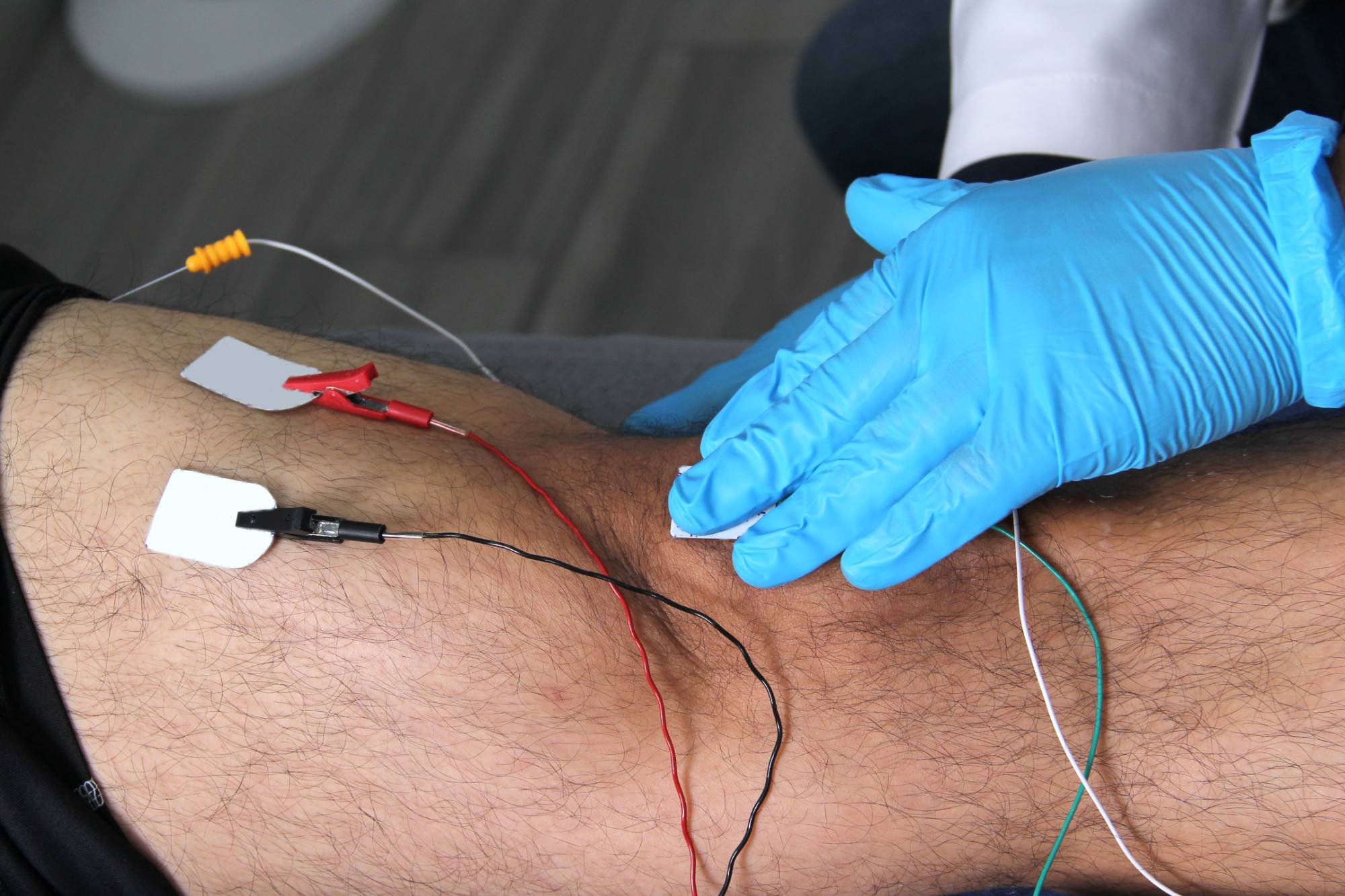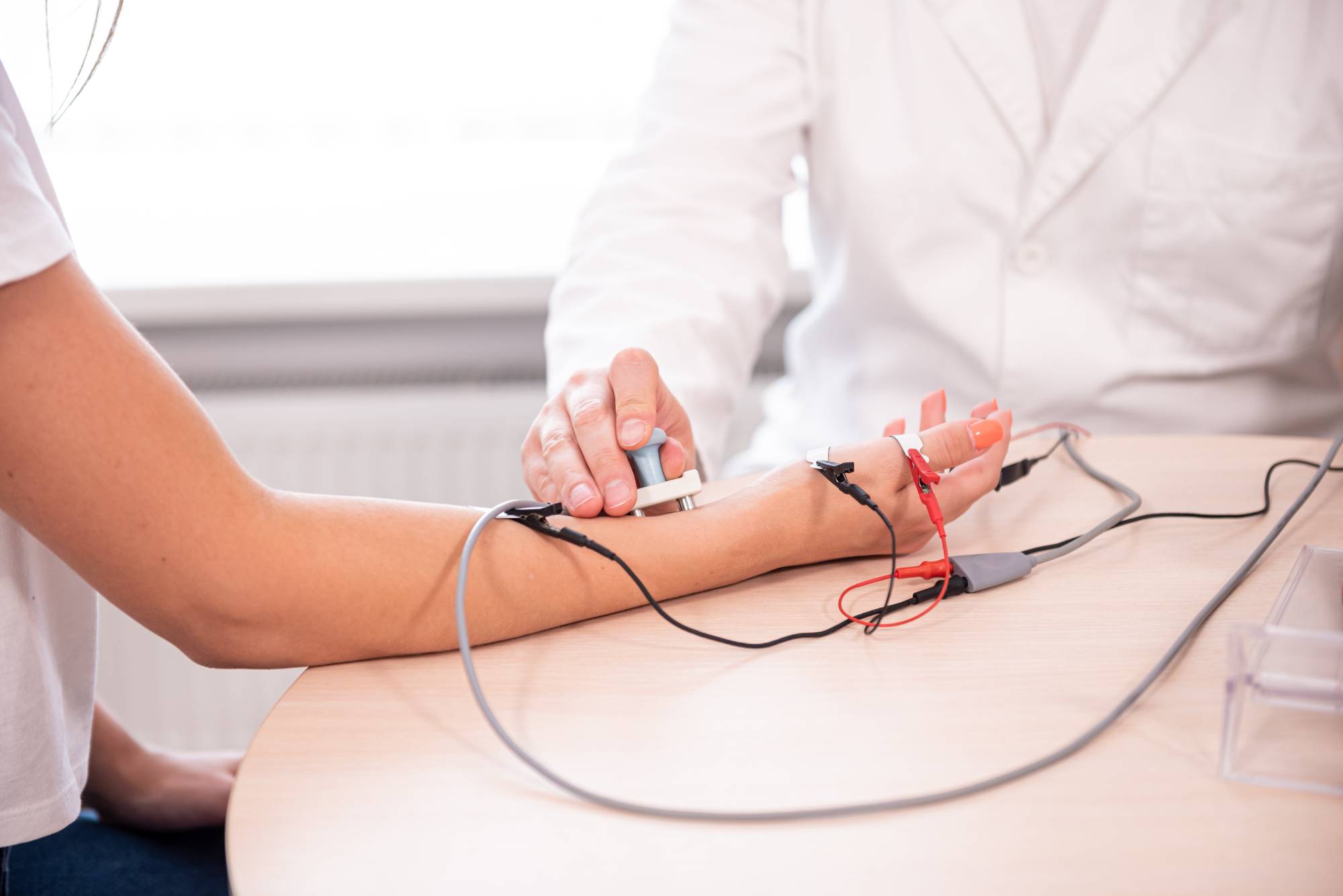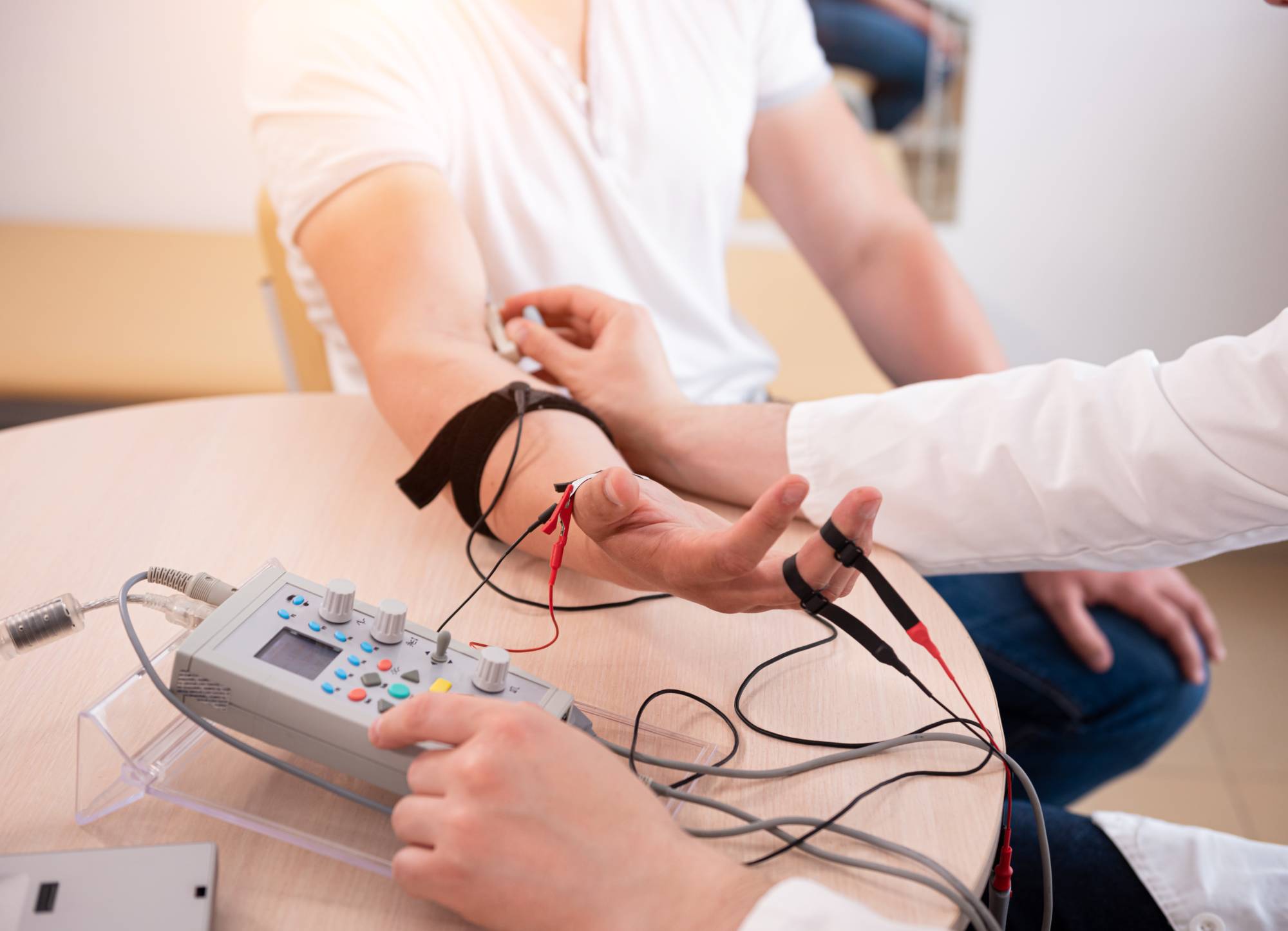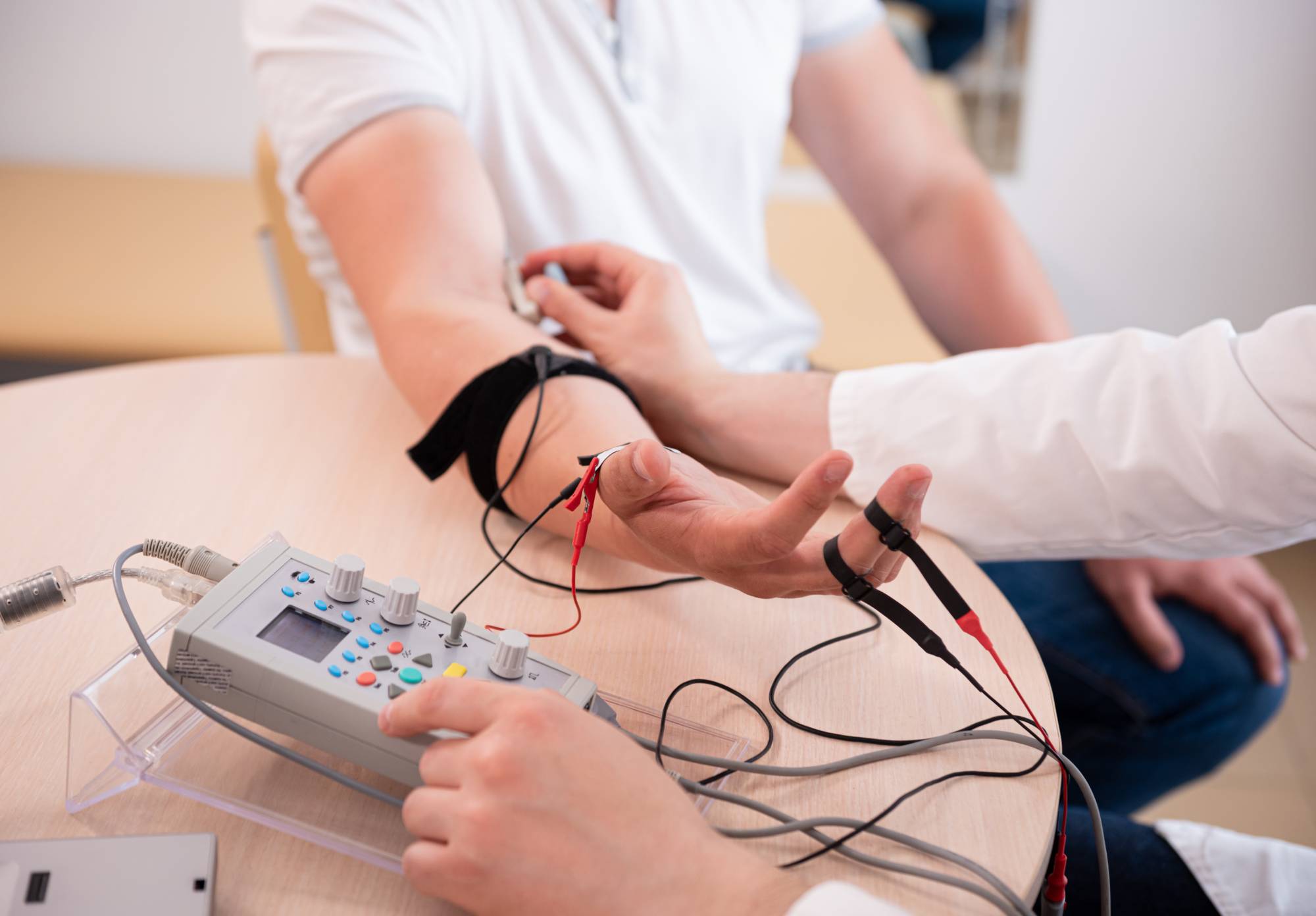Advanced electromyography testing that pinpoints exactly what’s causing your nerve or muscle problems.

Reviews

You’re dealing with numbness that won’t go away. Tingling that’s getting worse. Muscle weakness that’s starting to interfere with work or daily activities. You need answers, not more guessing.
EMG testing gives you those answers. This diagnostic test measures the electrical activity in your muscles and nerves, showing us exactly where the problem is and how severe it might be. No more wondering if your symptoms are “in your head” or if they’ll just disappear on their own.
When you know what’s actually happening, you can move forward with the right treatment. You can stop worrying about worst-case scenarios and start focusing on getting better. That’s what accurate diagnosis does – it turns uncertainty into a clear path forward.
We’ve been diagnosing nerve and muscle conditions in Manhattan for years. Our specialists perform EMG testing and nerve conduction studies daily, which means you’re getting someone who really knows what they’re looking for.
We use advanced EMG equipment that gives us detailed, accurate readings. But equipment is only as good as the person interpreting the results. Our board-certified specialists have seen every type of nerve and muscle condition, from common carpal tunnel syndrome to complex neurological disorders.
You’re not just getting a test – you’re getting an expert evaluation of what your symptoms mean and what to do about them.

The EMG test has two parts: nerve conduction study and electromyography. During the nerve conduction portion, we place small electrodes on your skin and send mild electrical pulses to measure how fast and strong your nerve signals are. It feels like small, brief shocks – uncomfortable but not painful.
For the electromyography portion, we insert a thin needle electrode into specific muscles to measure their electrical activity. You’ll feel a quick pinch when the needle goes in, then we’ll ask you to relax the muscle and then contract it. The needle picks up the electrical signals your muscle produces.
The entire test usually takes 30 to 60 minutes, depending on how many nerves and muscles we need to check. You’ll get your results the same day, along with a clear explanation of what we found and what it means for your treatment options.

Ready to get started?
Your EMG testing includes both nerve conduction studies and electromyography in one appointment. We test multiple nerve pathways and muscle groups to get a complete picture of what’s happening. This comprehensive approach means we don’t miss anything important.
You’ll receive a detailed report that goes to your referring doctor, but we also explain everything to you in plain language. We’ll tell you which nerves or muscles are affected, how severe the problem is, and what treatment options make sense based on your specific results.
Most insurance plans cover EMG testing when it’s medically necessary. We handle the insurance paperwork and can verify your coverage before your appointment. No surprises with billing – you’ll know what to expect upfront.

New York:
Florida:
Support